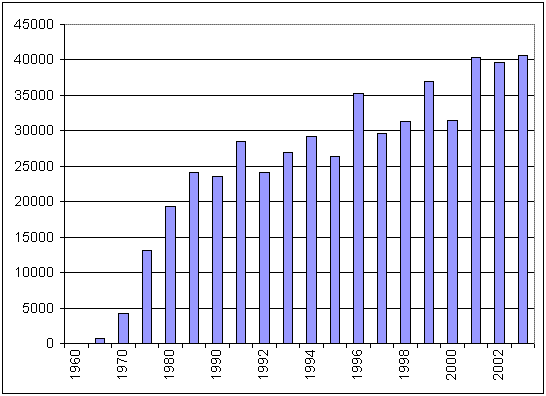|
|
|
|
Power?
Nuclear vs. Wind PowerIn the graph below you can see that the Ginna plant currently produces about 10% of New York's nuclear electrical power. Cohocton's wind project would add/replace about 0.5% to that, at best. To add the equivalent of one Ginna plant would require 1000 turbines as noted above. Can you imagine the Finger Lakes region covered with 1000 or more wind towers, each as high as the hills they're on? And that would barely get us to nuclear's 1970 level.
What about the larger picture?Current Fuel Mix for Electricity Generation in U.S. and New York State
Current total annual consumption of electric power in New York runs about 143,000 Thousand MWhs. 1000 wind turbines blanketing the hills of the Finger Lakes may produce as much as 4,380 of these or about 3% of this total. 50 wind turbines in Cohocton might produce up to 220 of these, or less than 1/6th of 1% of New York's consumption. Pretty puny power for all the expense, mess, and disruption. Perhaps instead of littering our environment, we need to be looking more seriously at other ways of conservation and less intrusive production alternatives. For instance, click here for an authoritative article about replacing greenhouse gas production with nuclear power. Accommodating for OverdevelopmentWind farms, while an apparently appealing approach to some,
are a classic example of what environmentalists call an
"end-of-the-pipe solution". Instead of tackling the problem -
our massive demand for energy - at source, they provide less damaging
means of accommodating it. Or part of it. The Cohocton project, by
replacing energy generation from power stations burning fossil fuel,
promises to reduce carbon dioxide emission by about 200,000 tons a year.
This is impressive, until you discover that a single jumbo jet, flying
from London to Miami and back every day, releases the climate-change
equivalent of 575,000 tons of carbon dioxide a year. One daily connection
between Britain and Florida costs nearly three large wind farms.
|
||||||||||||||||||||||||||||||||||

